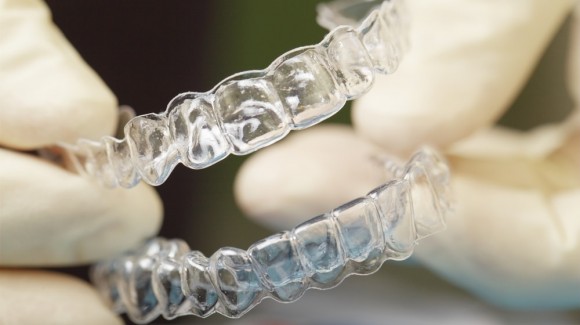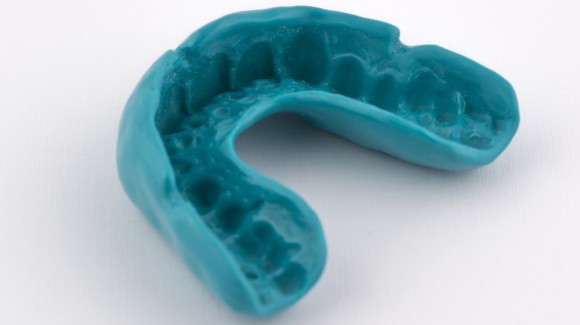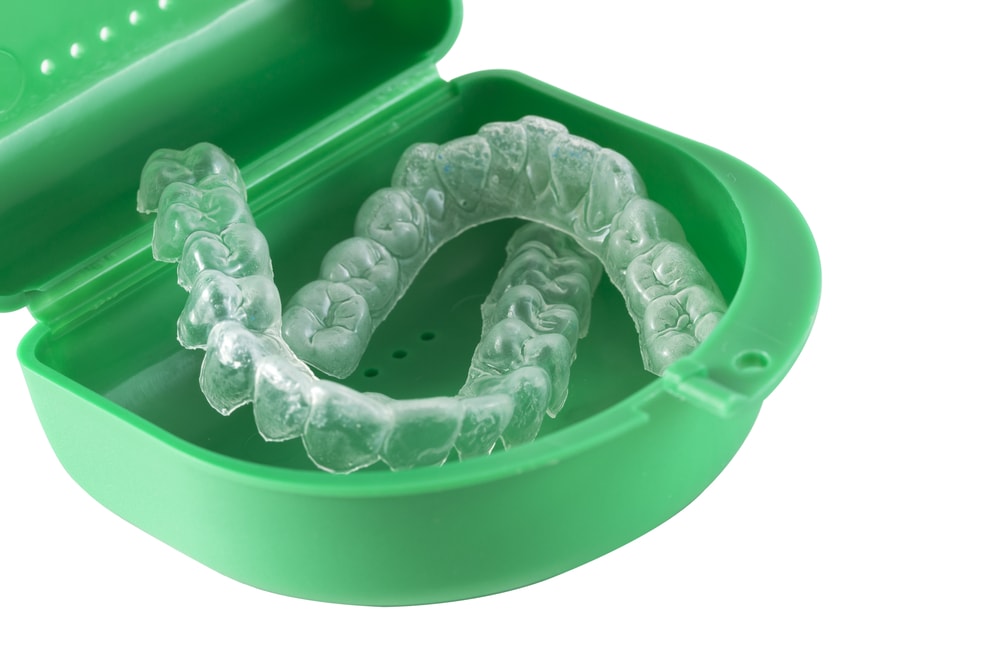
If you’ve ever watched a contact sporting event, you’ve undoubtedly seen one of the players wearing a mouth guard. A mouth guard protects the teeth and the jaws from forceful impact directed around the mouth. If there is a chance of contact with another player (football, hockey), or coming into contact with a hard surface (skateboarding, weightlifting), a mouth guard is highly recommended to protect your pearly whites from damage. Let’s explore the most common types of mouth guards and how to take of them to ensure your teeth are always protected.
Worn To Protect Grinding
Though sports are the first thing one thinks of when looking for a reason to wear a mouth guard, they can also be worn by people who grind their teeth, especially at night. Grinding can be caused by many factors, including stress, misaligned teeth, or an abnormal bite. Many people grind their teeth at night without even knowing it. Some of the symptoms of night grinding include:
- Dull headaches
- Soreness in the jaw
- Loose or painful teeth
If you grind your teeth at night, you might consider wearing a night guard to protect your teeth from further damage. Teeth grinding is a very common issue; getting the best mouth protection is essential. Without proper protection, chronic grinding can cause fracturing, loosening, or loss of teeth.
Types Of Mouth Guards
Here are the three most common types of mouth guards available:
- Stock mouth guards. These ready-to-wear mouth guards can be purchased at sporting goods and department stores. They can work well in a pinch, or if you need them only on occasion. However, they are not adjustable and can be uncomfortable.
- Boil and bite mouth guards. Once you get it home, you’ll be instructed to place it in boiling water to soften it, then place it in your mouth and bite into it to get more of a customized fit. These too can also be found at sporting goods and department stores.
- Custom mouth guards. Have the most personalized fit, as they are made by your dentist. After an impression of your teeth is made, a mouth guard is designed in a professional laboratory to give you perfection in protection and comfort.
These are not the same as products worn to straighten teeth, such as Invisalign and other straightening procedures.

Keeping it Clean
No matter what type of mouth guard you have, it’s important that you keep it clean. A simple rinse under the tap is not enough to keep germs from invading your mouth. Without proper cleaning, yeast and bacteria can build up and contaminate the mouthpiece. Brush it regularly with toothpaste and rinse with soapy water to get rid of germs. Soaking in an antimicrobial solution can also reduce germs and bacteria.
It’s recommended to purchase a new guard once it shows signs of wear-and-tear, such as cracks and rough patches. These worn areas are perfect bacterial breeding grounds and any rough or worn edges can cause irritation to your gums that can let bacteria in.

Where to Store it
Always store your mouth guard in a protective case that is vented for airflow. You want to make sure that there is enough air to keep the guard dry, as a moist guard can grow bacteria. Keep the guard in a place where neither pets nor small children can get to it to avoid chewing and choking hazards.
For more tips on how to care for your mouth guard, or if you’re interested in getting a custom mouth guard made, contact Tigard Tendercare Dental today! We’re always accepting new patients, and offer a wide-range of services to provide the best in dental care for you and your family.

Leave a Reply